When Southwest Airlines (SWA) announced its entry into the Hawaii market in 2019, it was met with great enthusiasm by both visitors and residents. State and county officials had also courted SWA. The primary driver behind the excitement about the long-awaited arrival was the prospect of cheaper Hawaii airfares as a result of “The Southwest Effect.”
What is the Southwest Effect?
The U.S. DOT coined the phrase thirty years ago, describing the boost in air travel and reduction in airfares that resulted from Southwest’s entry into new markets, like Hawaii.
When Southwest enters a new market, as it did in Hawaii five years ago, it increases inventory and dramatically lowers prices on competitive routes. This causes some airlines to lower their own airfares to match SWA, thereby reducing their profitability to remain competitive. With lower prices, more tickets are sold for all airlines in the market.
The “Southwest Effect” was expected to revolutionize Hawaii air travel both to and within the state. However, as time has shown, the impact was not as long-lasting or as transformative as many had anticipated.
This caused us to ponder the reasons behind the diminished Southwest Effect in Hawaii. We also looked for parallels with other markets where Southwest initially made a strong entry, only to contract later, as has been the case in Hawaii.
Southwest landed with a huge boom in Hawaii!
Southwest Airlines entered the Hawaiian market with great pricing and promises of enhanced travel experiences. BOH articles, when we first announced the airline’s arrival here, were some of the most widely read we had ever had. That was also the case when their first Hawaii airfares became available. And to be honest, those were nothing short of eye-popping.
The airline’s strategy included offering inter-island flights, challenging Hawaiian Airlines’ dominance. This resulted in lower fares and increased options for travelers, epitomizing the classic Southwest Effect.
Southwest Airlines initial big splash in the Hawaii market came with initial fares inter-island flights from just $19 and mainland routes on sale starting at just $39. The aggressive pricing strategy aimed to disrupt the existing market and attract a large number of travelers, and it did just that.
However, over time, Southwest Hawaii airfares have increased significantly, and the competitive advantage that Southwest once held has diminished. The airline’s operational challenges and evolving market conditions have led to significantly higher airfares and a shift away from its traditional low-cost roots, raising questions broadly among analysts about its status in that regard.
Factors leading to the decline of the Southwest Effect in Hawaii
1. Hawaii air market saturation.
Hawaii’s airline market was already highly competitive, with major players including Hawaiian Airlines, Alaska Airlines, and United Airlines. Southwest’s entry initially disrupted the West Coast market, but the competition has since nimbly adapted, leading to a significant stabilization of Hawaii airfare prices and service frequency.
Many of you have also bemoaned, along with us, about how many flights from Hawaii have shifted to operating overnight. And Southwest Hawaii red-eye flights will soon join in these.
2. Economic shifts that have occurred.
The pandemic drastically altered Hawaii’s travel industry, arguably even more than on the mainland, causing a significant decline in Hawaii travel demand prior to a very strong initial rebound. Since then, as airlines, including Southwest, have faced fast-rising operational costs, the low fares that defined The Southwest Effect prices became unsustainable.
3. Operational and management challenges.
Since arriving in Hawaii, SWA has experienced numerous hurdles including weather disruptions, crew shortages, a severe lack of new planes from Boeing, and intense investor dissatisfaction. These have led to everything from flight cancellations, to delays, flight reductions and other changes both to date and on the horizon. These issues continue to impact the airline’s reputation for reliability and customer satisfaction, which has otherwise generally been seen as stellar throughout its history.
Hawaiian Airlines, too, has been hit by many problems related to its own previously untarnished reputation for reliability and customer service as consumers seek a more predictable travel experience.
4. Changing consumer preferences impacting Hawaii.
Hawaii travelers more than ever appear to prioritize a combination of values, including flexibility and reliability, as well as reasonably priced value-added offerings like extra legroom and premium economy. That vs. exclusively either low fares or the appearance thereof.
Southwest’s big contraction in Hawaii.
One of the most telling signs of the decline in The Southwest Effect in Hawaii is the significant reduction in its Hawaii flights. According to our previous reporting, Southwest Airlines has trimmed its Hawaiian routes by over 50% over time. This contraction highlights the challenges the airline faced in maintaining its initial market presence and competitive edge.
Parallels in other Southwest markets.
Southwest Airlines has faced similar challenges in other markets we checked, where it initially entered with significant impact but later contracted due to a variety of reasons. Those have included the following.
Atlanta: Southwest acquired AirTran and expanded its presence. However, high competition and operational costs led to a gradual reduction in services there, and Southwest focused on more profitable opportunities.
Newark: Southwest’s Newark venture also faced intense competition and airport slot constraints. The airline ceased operations at Newark Liberty International Airport entirely in 2019 and reallocated its resources.
Dayton and Key West: In these smaller markets, Southwest’s initial entry also sought to tap into niche travel opportunities. However, that led to eventual exits from these markets over time.
Why the current state of air travel to Hawaii remains in flux.
The initial span of The Southwest Effect in Hawaii has clearly waned, and air travel here remains competitive but temporarily stabilized, both from the mainland and interisland. The next big change will relate to whether or not Alaska Airlines is able to complete its acquisition of Hawaiian Airlines. We will know more about that in the next few weeks when we hear from the US Justice Department.
Airlines are refocusing on more than just price. That includes sustainable travel initiatives, enhanced customer experiences, value-added propositions, and technology innovations to attract and retain customers. Southwest appears poised to be at the forefront of such initiatives with future plans that may include assigned seating and more.
While the Southwest Effect initially excited and changed Hawaii’s airline market, several factors have tempered the impact over time. Market saturation, economic shifts, operational challenges, and changing consumer preferences all played a role in the decline of the Southwest effect, which is not unlike patterns observed in other markets.
The situation in Hawaii air travel, including this, highlights the airline industry’s never-abating complexities and dynamics.
We welcome your thoughts about Hawaii air travel, the Southwest Effect, and related topics. Mahalo!
Image of Southwest Airlines’ first arrival water salute. Honolulu, 2019.
Get Breaking Hawaii Travel News
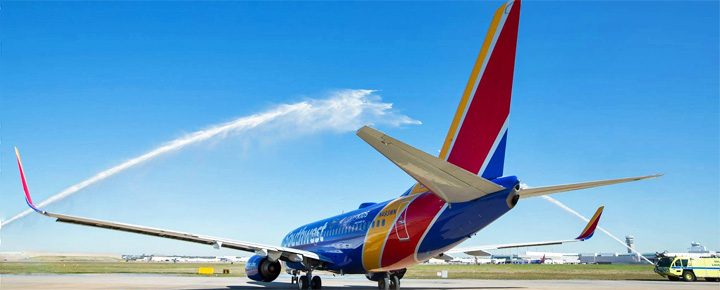

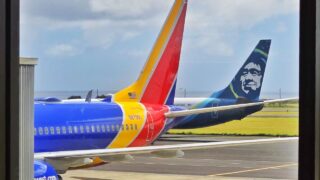
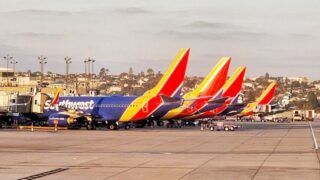
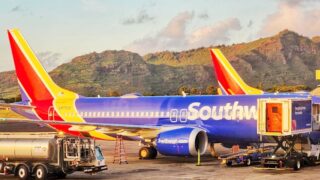
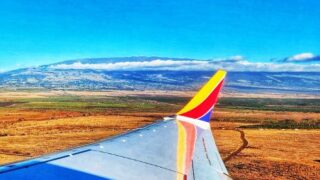
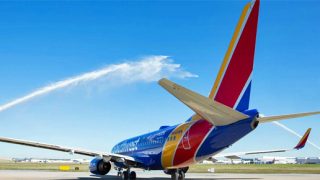
There is an interesting video about the demise of LCC’s. They were hit hard by rising fuel prices, SWA’s profit margin has shrunk immensely.
Also have a reputation for being cheap to purchase tickets, but other carriers are often cheaper.
“Since then, as airlines, including Southwest, have faced fast-rising operational costs, the low fares that defined The Southwest Effect prices became unsustainable.”
No, the low fares were always unsustainable. Southwest’s business strategy has always been to enter a new market, charge fares way below cost, drive the competition into bankruptcy, then take over and jack up the fares with no competition left. That was their plan for Hawaii. They never intended for those fares to be sustainable. But Southwest wasn’t expecting the acquisition by Alaska, and now they face continued empty interisland planes incinerating cash far longer than they had expected.
It’s interesting how so many people cheered Southwest’s entry into the market and the “Southwest Effect,” just like they cheered Go’s. Yet when Go drove Aloha out of business, everybody was beside themselves. That was Southwest’s game plan for Hawaiian.
Well said Dan and for that reason SWA will always be viewed as the airline that tried to move in and destroy the local airline and local jobs. Interesting that now a Seattle based airline will be considered the local airline. I don’t see SWA ever shedding their image here nor be able to operate profitably inter island. Their load factors and high costs flying Max’s inter island is a huge cash drain. Not to mention their lack of inter island expertise is still rearing its head.
Thanks for the article. Aligns with my observations. I’ve flown 8 HNL-mainland roundtrips in the last 2 years where SW was an option – not once were they remotely price competitive. SW wasn’t price setting, they weren’t even trying to compete (not sure who was buying these overpriced tickets – maybe it’s all those companion passes they’ve been practically given away??). Interisland, Hawaiian always price matches and offers ~4x the schedule options. As someone with the HA credit card and its 2 free checked bags, there is zero reason to book SW for these flights. And as others commented, interisland flights are now up to pre-SW pricing. On the positive side, I credit SW with getting HA to up their credit card checked bag benefit to 2 bags, but that’s the only lasting “SW effect” I see.
So… Southwest is not the gem it was once expected to be. In so many ways that is a good thing. Really.
To put it a little too simply, but I’m sorry to say probably accurately, from flights to accommodations to car rentals to everything else, Hawaii is becoming a destination for rich folks, who seem to be willing so far to pay whatever it takes to vacation there , and may well expect many concessions, and few regulations from the Islands in return. Paradise lost-
Has there been any serious analysis on Why so many airlines are cutting back on flights based on the declining state of the economy? It seems to me that would be a good place to start. A typical vacation to Hawaii for a family of four has to be in the $20,000 range even with efforts to economize. I personally program an average of $8000 for a two week unaccompanied trip with no tourist oriented activities.
Studies show that 70% of American’s don’t have access to $1000 without borrowing it. Credit card interest rates are pushing 30%. I’m going to speculate that frivolous vacations are the first thing that will be discarded when just (trying to) pay the mortgage, car loans, living expenses, and debt are at the top of the list…
Just Sayin…
Hi Jay~ Right now airlines have increased capacity to handle a 6.3% uptick in passneger boardings. TSA is recording highest ever one day total passengers screened for each subsequent holiday. However, airline capacity is being moved towards demand and Europe & Asia are the big winners this year, while Hawaii is on a 10% drop year over year. Keep in mind that Hawaii benefited greatly after covid restrictions were lifted as people wanted to stay close to home, so the 2022/2023 base is higher than normal.
Structurally, the Lahania fire and ‘press’ around the aftermath, along with higher prices resulting from supply chain collapse (rental cars are a good example), higher prices for rooms and food (happening everywhere) and inflation shirinking vacation budgets is contributing to the downturn. Big question is whether the cyclical nature of travel will swing back in Hawai’s favor.
Great breakdown! Thanks.
Best Regards
Hi Jay.
Thanks!
Aloha.
I can’t imagine what Hawaii would do without Southwest here! Hawaiian Airlines would Gouge the locals like they did when Aloha Airlines went out of business. Hawaiian Airlines is not local friendly! They even drove Island Air out of business, then pulled their planes (Ohana by Hawaiian) out of the Molokai’i and Lana’i markets and basically told the residents of those islands to figure it out…We Abandoned You!
News Flash Jay, fares are now close to what HA charged when Aloha went out of business …..no HA did not drive them out of business, inter island has always been a tough market, they didn’t survive a very tough patch when the economy tumbled after decades of intense competition between them and numerous upstarts trying their own version of the “SWA effect”…cheap money losing fares to try and get market share.
Inter-island jet travel is insanely expensive to operate. Short distances mean higher-than-average fuel burn per flight, and fares aren’t nearly high enough to cover actual costs. Southwest severely misjudged the market and is still adjusting to the harsh economic realities.
SWA entered the market like someone moving to Hawaii and starts speaking pidgin when they can’t even pronounce the street names.
They introduced unrealistic fares thinking it would get them market share with little regard to the impact it would have. I believe they’ll always have a bit of a carpetbagger image as a result…
Good day~. I would also add that Hawaii is a mature market where Southwest has had troubles expanding, as cited in the article. Mature in the sense of fixed/limited growth, particularly inter-isalnd (domestic). Geography and infrastructure limit the kind of expansion that Southwest is an expert at. They come into underserved markets and create non-stops or fewer stops for those who had been driving to an nearby airport and then making a conection at a national hub. Southwest’s success is point-2-point.
Unless some new island pop to the surface, that model is not applicabe here and hence the drawback of inter-island flights as traffic growth hit a ceiling. The key is to understand your market, allocate assests to meet demand and charge a price that keeps you in business. You can come in with a low price but you cannot sustain that price if there is no growth opportunity. Cheers
Southwest needs to sign more corporate deals to have a consistent income stream for interisland travel. They also need to spend more time on those commuter routes and fill in gaps that Hawaiian Airlines isn’t currently filling, and/or add a route or to for “spillage” where traditional commuter hours have/need capacity beyond just HA routes. Lastly, SWA needs to do better to advertise to locals the ease of use with the app. Namely, 10 min cancellation before a flight, easy cancel in the app (no lame and timely call center like HA) and easy refund, keep your points forever easy rebooking. Besides, those empty seats on HA are only getting filled by NoRev or Zed…
William I believe you meant those “empty seats” on SWA? HA has strong load factors that are as good as pre Covid. It’s SWA that’s flying empty seats around on expensive aircraft poorly suited for inter island. Flying a plane suited for transpac and then tying it up for an inter island leg was a bad plan from the beginning, for several reasons.
While SWA can aggressively enter new markets, driving down prices,
they have not displayed the ability to follow a long term strategy.
Elliot Investment Management, SWA’s largest investor has asked for
SWA’s CEO along with board members to be replaced due to mismanagement.
SW is now waiting for 4 other process’ to play out. Hi market contraction, Hi/AK, 737Max deliveries and Proxy fight. Any one of which could trigger a withdrawal from the market. HI is on their short list to drop completely. Next baby step could be to stop inter-island service. This will effectively reduce their schedule more. I suspect they purchase all ground services in HI so there’s almost no financial exposure involved. One way to gauge this is to see how far out they will sell you a ticket. Industry norm is 11 months. If you find they won’t do that, determine what that number is. It will tell you volumes. The HI service decision is clearly not at the top of their to-do list. It’s a consequence of other more important decisions.
I’m actually scared to fly with them..